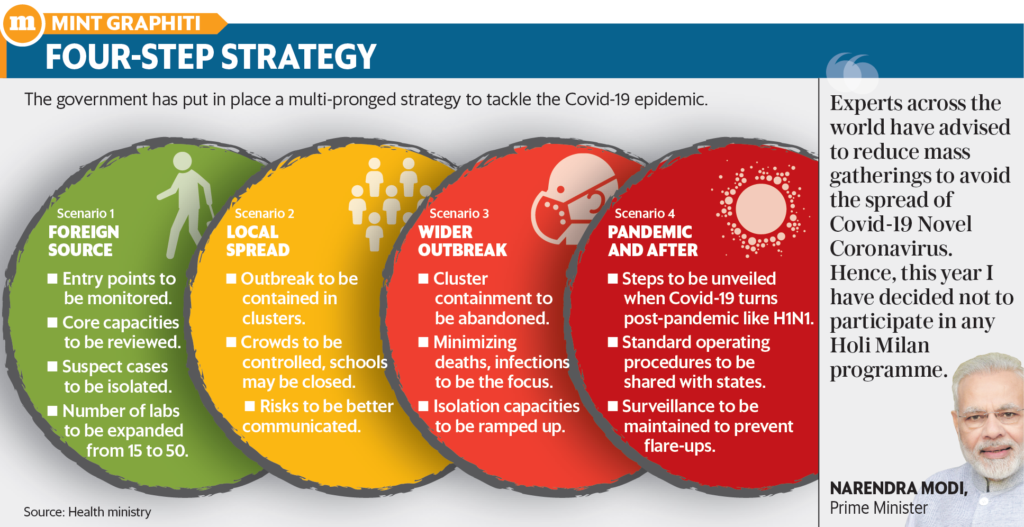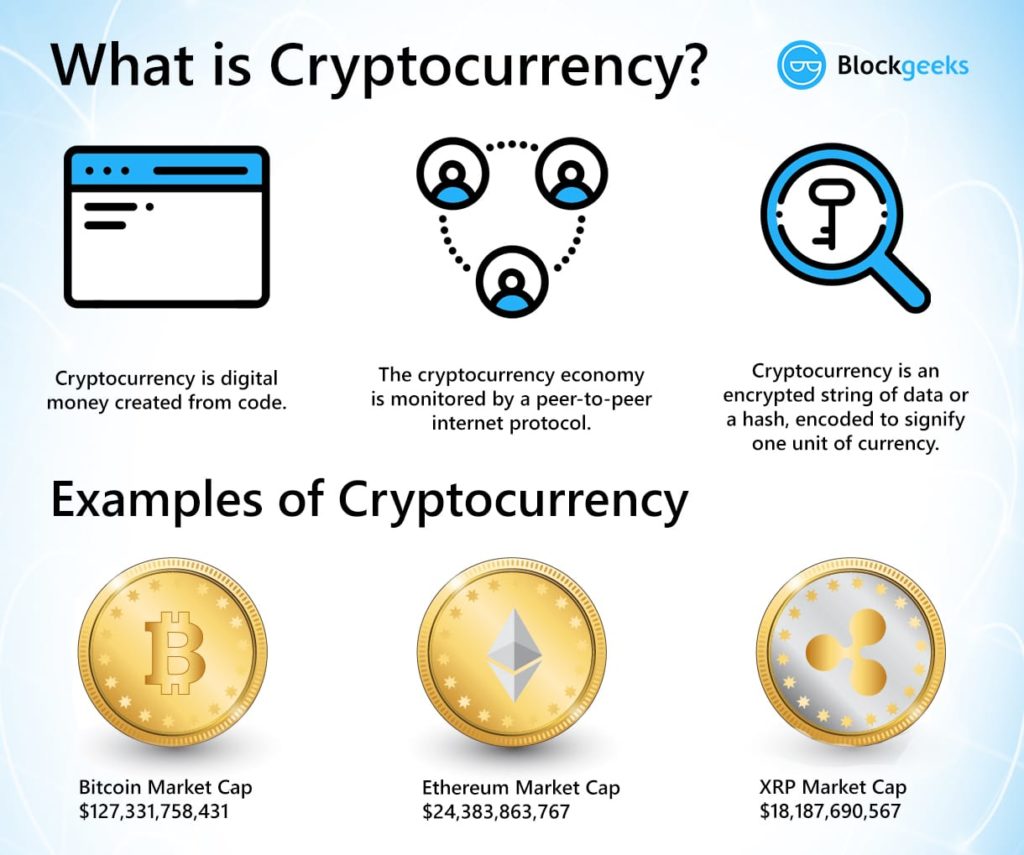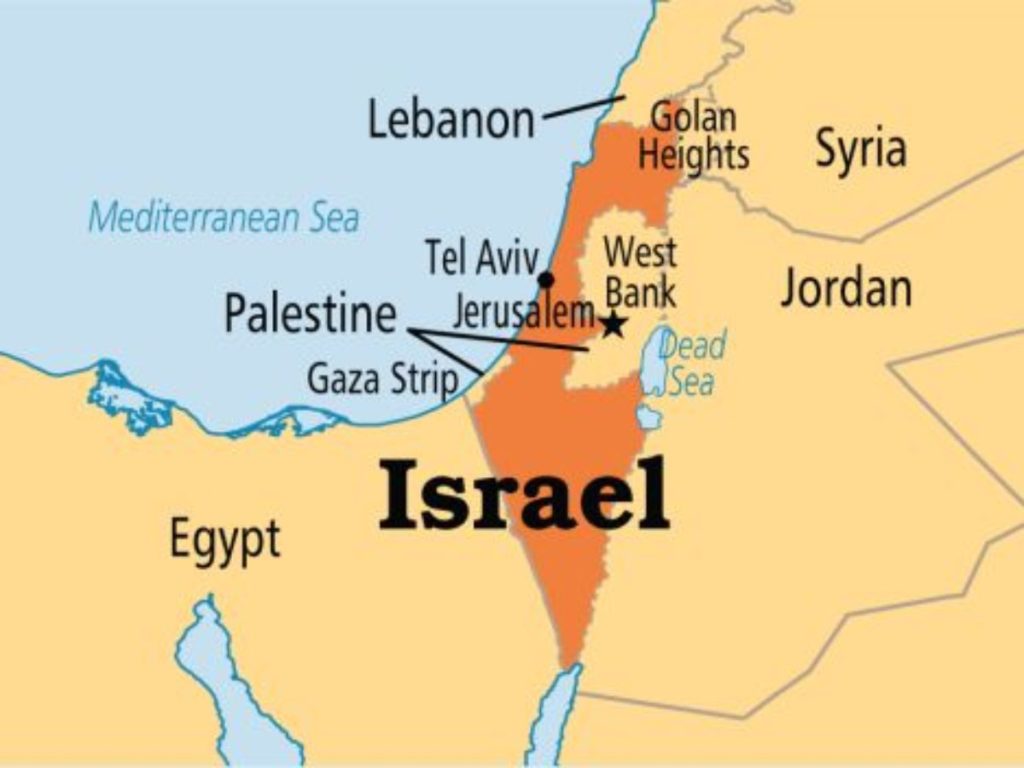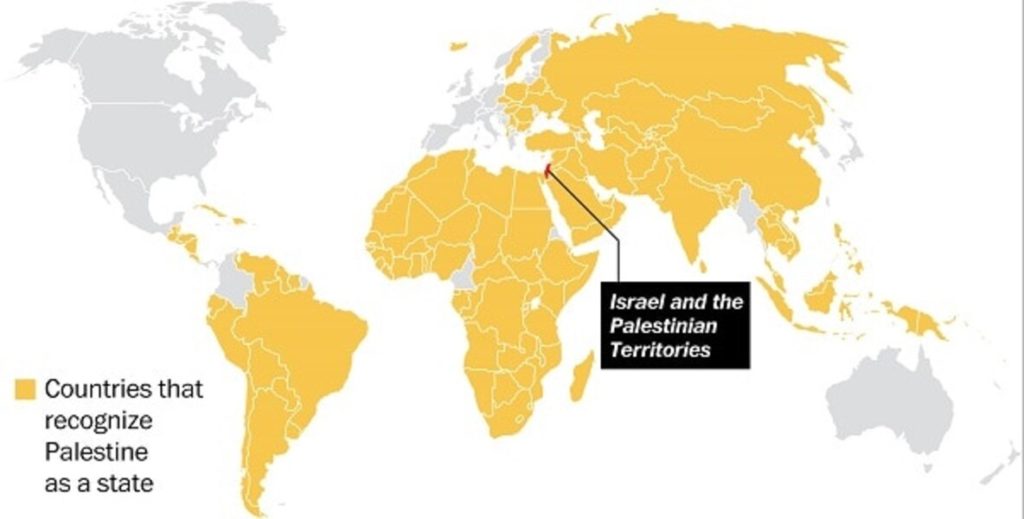Contents:
- COVID-19 Cases
- E-waste recycling has doubled – Centre
- Lok Sabha approves tax resolution bill as disruptions continue
- Supreme Court Frees Trade in Cryptocurrencies
- IBC Bill discriminates against homebuyers
- India Committed to a Two-state solution – on Palestine
- Nod for changes to Companies Act for decriminalising offences
- Bond yields decline on expectation of rate cut
- Public sector bank mergers get approval
COVID-19 CASES
Focus: GS-III Science and Technology, Prelims
Why in news?
- COVID-19 Cases rise to 29 in India, of which 2 cases with high viral load were detected in Telangana.
- The infection broke out in China’s Wuhan city in December 2019 and has spread to over 60 countries, killing more than 3,000 and infecting over 90,000.
- COVID-19 outbreak has killed 19 people in Iran.
Spread of Coronavirus in India
- India reported the first confirmed case of the coronavirus infection on 30 January 2020 in the state of Kerala.
- The first three Indians tested positive for coronavirus are from Kerala and have been discharged, but home-quarantined.
- Another case was confirmed in the national capital Delhi, and the another a Bengaluru techie in Telangana.
- Italians touring in India have been tested positive for Covid-19 coronavirus. They have been quarantined at the Chawla Camp in New Delhi.
How is India dealing with it?

- India, with a significant rise in COVID-19 cases, will start universal screening at all international airports.
- Thermal Imagery equipment as well as Mandatory Declaration Forms (of places visited by tourists/travelers) will be used to screen All passengers of International Flights.
- Health authorities will check and sensitize every household within a 3 Kilometer radius of the house of the infected person.
What is COVID-19?
Coronaviruses are a large family of viruses, including some that cause the common cold to some that cause major diseases such as the Severe Acute Respiratory Syndrome (SARS) and the Middle East Respiratory Syndrome (MERS).
A novel coronavirus (CoV) [COVID-19] is a new strain of coronavirus.
The disease caused by the novel coronavirus first identified in Wuhan, China, has been named coronavirus disease 2019 (COVID-19) – ‘CO’ stands for corona, ‘VI’ for virus, and ‘D’ for disease. Formerly, this disease was referred to as ‘2019 novel coronavirus’ or ‘2019-nCoV.’
How does the novel coronavirus spread?
The virus is transmitted through
- Direct contact with respiratory droplets of an infected person (generated through coughing and sneezing)
- Touching surfaces contaminated with the virus.
The virus may survive on surfaces for several hours, but simple disinfectants can kill it.

What are the Symptoms of Coronavirus?
- Signs and symptoms of COVID-19 may appear two to 14 days after exposure and can include:
- Fever
- Cough
- Shortness of breath or difficulty breathing
- The severity of COVID-19 symptoms can range from very mild to severe.
- People who are older or have existing medical conditions, such as heart disease, may be at higher risk of serious illness.
- This is similar to what is seen with other respiratory illnesses, such as influenza.
How to prevent Coronavirus infection?
- Although there is no vaccine available to prevent infection with the new coronavirus, you can take steps to reduce your risk of infection. WHO and CDC recommend following the standard precautions for avoiding respiratory viruses:
- Wash your hands often with soap and water, or use an alcohol-based hand sanitizer.
- Cover your mouth and nose with your elbow or tissue when you cough or sneeze.
- Avoid touching your eyes, nose and mouth if your hands aren’t clean.
- Avoid close contact with anyone who is sick.
- Avoid sharing dishes, glasses, bedding and other household items if you’re sick.
- Clean and disinfect surfaces you often touch.
- Stay home from work, school and public areas if you’re sick.
- CDC doesn’t recommend that healthy people wear a facemask to protect themselves from respiratory illnesses, including COVID-19. Only wear a mask if a health care provider tells you to do so.
- WHO also recommends that you:
- Avoid eating raw or undercooked meat or animal organs.
- Avoid contact with live animals and surfaces they may have touched if you’re visiting live markets in areas that have recently had new coronavirus cases.
E-WASTE RECYCLING HAS DOUBLED – CENTRE
Focus: GS-III Science and Technology, Prelims
Why in news?
The Central Government said that the electronic waste (e-waste) in 2018-19 was over double of the e-waste recycled in 2017-18.
Details
- The approximate estimated generation of e-waste in FY 2017-2018 for electrical and electronic equipment was 7,08,445 tonnes of which 69,414 tonnes were recycled, whereas in FY 2018-2019, the e-waste generation estimate was 7,71,215 tonnes of which 1,64,663 tonnes were recycled.
- This translates to a 10% recycling rate in 2017-18 rising to a little over 20% in 2018-19.
What is e-waste?
- E-waste is a popular, informal name for electronic products nearing the end of their “useful life.” Computers, televisions, VCRs, stereos, copiers, and fax machines are common electronic products. Many of these products can be reused, refurbished, or recycled.
- There is no clear definition for e-waste; for instance whether or not items like microwave ovens and other similar “appliances” should be grouped into the category has not been established.
Is e-waste dangerous?
- Electronic scrap components, such as CPUs, contain potentially harmful materials such as lead, cadmium, beryllium, or brominated flame retardants.
- Recycling and disposal of e-waste may involve significant risk to health of workers and their communities.
UN Sustainable Development Goal (SDG) 12 talks of the necessity to “ensure sustainable consumption and production patterns”. Referring to discarded electronic devices, this means achieving ecologically acceptable management throughout their life cycle, as well as reducing the release of poisons into the atmosphere, water and soil to minimise their negative impact on health and the environment.
e-Waste recycling in India
- While e-waste recycling is a source of income for many people in India, it also poses numerous health and environmental risks.
- More than 95% of India’s e-waste is illegally recycled by informal waste pickers called kabadiwalas or raddiwalas.
- These workers operate independently, outside of any formal organization which makes enforcing e-waste regulations difficult-to-impossible.
- Recyclers often rely on rudimentary recycling techniques that can release toxic pollutants into the surrounding area.
- The release of toxic pollutants associated with crude e-waste recycling can have far reaching, irreversible consequences.
- A report by the Union Environment Ministry in 2018 found that many of India’s e-waste recyclers weren’t recycling waste at all. While some were storing it in hazardous conditions, many didn’t even have the capacity to handle such waste.
Legislation related to e-waste recycling in India
- The Ministry of Environment, Forests, and Climate Change (MoEFCC) is primarily responsible for regulations regarding electronic waste. Additionally, the Central Pollution Control Board (CPCB) and State Pollution Control Board (SPCB) produce implementation procedures to ensure proper management of rules set forth by the MoEFCC.
E-Waste (Management and Handling) Rules, 2011
- Prior to the enactment of the E-Waste (Management and Handling) Rules, 2011; e-waste was covered under the Hazardous Waste Management (HWM) Rules. Under the Environmental Protection Act 1986.
- It made manufacturers, dealers, refurbishers and Producer Responsibility Organizations (PRO) liable for safe disposal of electronic goods.
E-Waste Management Rules, 2016
- The E-Waste Management Rules, 2016 have recently been amended by the Centre, to facilitate and effectively implement the environmentally sound management of e-waste in India.
- These amendments have been made with the objective of channelizing the e-waste generated in the country towards authorized dismantlers and recyclers in order to further formalize the e-waste recycling sector.
- By way of revised targets and monitoring under the Central Pollution Control Board (CPCB), effective and improved management of e-waste would be ensured.
LOK SABHA APPROVES TAX RESOLUTION BILL AS DISRUPTIONS CONTINUE
Focus: GS-II Governance
Why in news?
The Direct Tax Vivad se Vishwas Bill that seeks to expedite resolution of pending tax disputes was passed by the Lok Sabha on 4th March 2020, even as normal proceedings in both houses of Parliament remain paralysed for the third day in a row over the Opposition’s demand for an immediate discussion on the Delhi riots.
Direct Tax – Vivad Se Vishwas Bill, 2020
- In February 2020, the Union Cabinet had approved an amendment to the ‘Direct Tax Vivad se Vishwas Bill, 2020’ in order to widen its scope to cover litigation pending in various Debt Recovery Tribunals (DRTs).
- The Bill provides a mechanism for resolution of pending tax disputes related to income tax and corporation tax.
- The Bill in current form allows taxpayers to settle cases pending before the Commissioner (Appeals), Income Tax Appellate Tribunals (ITATs), Debt Recovery Tribunals (DRTs), High Courts and the Supreme Court.
- The Direct Tax Vivad se Vishwas Bill, 2020 is similar to the ‘Sabka Vishwas Scheme’, which was brought in to reduce litigation in indirect taxes in the year 2019. It resulted in settling over 1,89,000 cases.
Important Points about the Vivad Se Vishwas Bill
- The Bill provides a mechanism for resolution of pending tax disputes related to direct taxes (Income Tax and Corporate Tax) in simple and speedy manner.
- ccording to the Finance Ministry, at present there are 4.83 lakh pending direct tax cases worth Rs.9 lakh crore in the courts. Through this scheme, the government wants to recover this money in a swift and simple way.
- The government is witnessing a big shortfall in revenues, especially tax revenues, hence, increasing revenues in one of the priorities of the government.
- Direct Tax collections have been lower than their budget targets due to the overall economic slowdown and a cut in the corporate tax rate in September, 2019.
Mechanism of Vivad se Vishwas
- In case of payment of tax, a taxpayer would be required to pay only the amount of the disputed taxes and will get complete waiver of interest, penalty and prosecution provided he/she pays by March 31, 2020.
- But, if the tax arrears relate to disputed interest or penalty only, then 25% of disputed penalty or interest will have to be paid.
- Those who avail this scheme after March 31, 2020 will have to pay some additional amount.
- However, the scheme will remain open till June 30, 2020.
- Once a dispute is resolved, the designated authority cannot levy interest or penalty in relation to that dispute.
- Further, no appellate forum can make a decision in relation to the matter of dispute once it is resolved.
- Revival of Disputes: However, if an appellant provides false information or violates the Income Tax Act, 1961, then case of dispute can be revived.
SUPREME COURT FREES TRADE IN CRYPTOCURRENCIES
Focus: GS-III Science and Technology, Prelims
Why in news?
- The Supreme Court on March 4 set aside an April 6, 2018, circular of the Reserve Bank of India (RBI) prohibiting banks and entities regulated by it from providing services in relation to virtual currencies (VCs).
- The position as on date is that VCs are not banned, but the trading in VCs and the functioning of VC exchanges are sent to comatose by the April 6 circular.
Why did the SC Lift the ban?
- RBI had Not come out with a stand that any of the entities regulated by it namely, nationalised banks/scheduled commercial banks/cooperative banks/NBFCs, have suffered any loss or adverse effect directly or indirectly, on account of VC exchanges
- The RBI did not consider the availability of alternatives before issuing the circular (April 6, 2018 circular) banning the Virtual Currencies (VC).
- The Centre’s failure to introduce an official digital Rupee despite two draft bills and several committees.
What is Cryptocurrency?

- Cryptocurrency is an internet-based medium of exchange which uses cryptographical functions to conduct financial transactions. Cryptocurrencies leverage blockchain technology to gain decentralization, transparency, and immutability.
- The most important feature of a cryptocurrency is that it is not controlled by any central authority: the decentralized nature of the blockchain makes cryptocurrencies theoretically immune to the old ways of government control and interference.
- Cryptocurrencies can be sent directly between two parties via the use of private and public keys. These transfers can be done with minimal processing fees, allowing users to avoid the steep fees charged by traditional financial institutions.
- Few Notable Cryptocurrencies
are:
- Bitcoin – First and the most famous cryptocurrency
- Ethereum
- Ripple
- Litecoin
- Monero
IBC BILL DISCRIMINATES AGAINST HOMEBUYERS
Focus: GS-II Governance
Why in news?
- The Insolvency and Bankruptcy Code (Second Amendment) Bill, 2019, has introduced a new clause that sets a threshold of a minimum 100 homebuyers or 10% of total homebuyers in a project, whichever is less, as a requirement to jointly take the developer to an insolvency court.
- This means that an individual homebuyer, who is a financial creditor, cannot file an insolvency application.
Insolvency and Bankruptcy Code (IBC), 2016
- Insolvency and Bankruptcy Code, 2016 provides a time-bound process for resolving insolvency in companies and among individuals.
- The Government implemented the Insolvency and Bankruptcy Code (IBC) to consolidate all laws related to insolvency and bankruptcy and to tackle Non-Performing Assets (NPA), a problem that has been pulling the Indian economy down for years.
Objectives of IBC
- To consolidate and amend all existing insolvency laws in India.
- To simplify and expedite the Insolvency and Bankruptcy Proceedings in India.
- To protect the interest of creditors including stakeholders in a company.
- To revive the company in a time-bound manner.
- To promote entrepreneurship.
- To get the necessary relief to the creditors and consequently increase the credit supply in the economy.
- To work out a new and timely recovery procedure to be adopted by the banks, financial institutions or individuals.
- To set up an Insolvency and Bankruptcy Board of India.
- Maximization of the value of assets of corporate persons.
Insolvency and Bankruptcy Code (Second Amendment) Bill, 2019
- The amendment also intends to provide protection to a corporation from criminal proceedings against offences committed by previous management or promoters.
- Additionally, it also provides a faster revival process for stressed companies.
- The amendment brings the much awaited changes needed in the insolvency sector. It clears the air on various aspects and provides relief to both corporate debtor as well as the creditors.
- The thresholds introduce will prevent admission of unnecessary cases to the insolvency court.
- However, even after anticipation, cross border insolvency framework has not been included in the amendment.
What is Insolvency and Bankruptcy?
- Insolvency is a financial status: your debts are greater than the fair market value of your assets & you’re unable to pay your debts as they generally become due.
- Bankruptcy is a legal status: it’s a legal procedure whereupon an insolvent person files for protection from her creditors so that they cannot commence or continue legal proceedings (like a wage garnishment) against her to recover their debts.
Process of resolution of Insolvency
- If the adjudicating authority accepts the Insolvency resolution process initiated by any of the stakeholders of the firm: firm/debtors/creditors/employees., then – an Insolvency resolution professional (IP) is appointed.
- The power of the management and the board of the firm is transferred to the committee of creditors (CoC) and they act through the IP.
- The IP has to decide whether to revive the company (insolvency resolution) or liquidate it (liquidation).
- If they decide to revive, they have to find someone willing to buy the firm.
- The creditors also have to accept a significant reduction in debt. The reduction is known as a haircut.
- They invite open bids from the interested parties to buy the firm.
- They choose the party with the best resolution plan, that is acceptable to the majority of the creditors (75 % in CoC), to take over the management of the firm.
INDIA COMMITTED TO TWO-STATE SOLUTION – ON PALESTINE
Focus: GS-II International Relations
Why in news?
- Members of UN said: India has remained “steadfast” in its support for Palestinian rights and has consistently voted in favour of Palestine at the United Nations on “15 key resolutions”.
- They called for New Delhi to play an “enhanced” role in the search for a solution to the Israel-Palestine conflict.
Israel – Palestine Conflict
- The Israeli–Palestinian conflict is the ongoing struggle between Israelis and Palestinians that began in the mid-20th century.
- The origins to the conflict can be traced back to Jewish immigration and sectarian conflict in Mandatory Palestine between Jews and Arabs.
- Despite a long-term peace process and the general reconciliation of Israel with Egypt and Jordan, Israelis and Palestinians have failed to reach a final peace agreement.
- The key issues are mutual recognition and security, borders, water rights, control of Jerusalem, Israeli settlements, Palestinian freedom of movement, and Palestinian right of return.
What is the Two-state Solution
- The two-state solution to the Israeli–Palestinian conflict envisages an independent State of Palestine alongside the State of Israel, west of the Jordan River.
- The boundary between the two states is still subject to dispute and negotiation, with Palestinian and Arab leadership insisting on the “1967 borders”, which is not accepted by Israel.
- Many attempts have been made to broker a two-state solution, involving the creation of an independent Palestinian state alongside the State of Israel (after Israel’s establishment in 1948).
- In 2007, the majority of both Israelis and Palestinians, according to a number of polls, preferred the two-state solution over any other solution as a means of resolving the conflict.

The History of India’s stand in the Israel – Palestine conflict’
- In the early 1920s and amidst the Khilafat struggle, Indian nationalists made common cause with the Arabs of Palestine and adopted a position that was unsympathetic to the Jewish aspirations for a national home in Palestine.
- Mahatma Gandhi’s 1938 statement said “Palestine belongs to the Arabs in the same sense that England belongs to the English and France to the French”.
- Prime Minister Narasimha Rao hosted Arafat in 1992 for the first time and signalled India’s intention of abandoning its four decades old policy of non-relations with Israel.
India’s stand in the Israel – Palestine conflict:

- India has consistently voted in favour of those resolutions that promote the two-state solution with a Palestinian claim to East Jerusalem.
- Peace based on two-state solution is much needed in the face of international proposals that are in breach of these principles, and cannot be forged between Israel and a third country [U.S.], but can only come from Israel-Palestine talks, which India also supports.
NOD FOR CHANGES TO COMPANIES ACT FOR DECRIMINALISING OFFENCES
Focus: GS-III Indian Economy, GS-II Governance
Why in news?
- On 4th March, the Union Cabinet approved the proposal to amend 65 sections of the Companies Act, in a bid to decriminalise a number of offences and ease corporate social responsibility (CSR) requirements, especially for smaller companies.
- The amendment bill will also enable the listing of Indian companies on stock exchanges in foreign jurisdictions.
- This is expected to give Indian firms greater access to capital, a broader investor base and better valuations.
- The Centre proposes to recategorise 23 offences so that they can be dealt with through an in-house adjudication framework, while five types of offences will be dealt with under different alternative frameworks.
Significance of these changes
The changes are expected to significantly enhance the confidence of Indian corporates in the government’s resolve to provide greater ease [of doing business] and accord highest respect to honest wealth creators in the country and reduce the burden on the justice system.
Companies Act 2013
- The Companies Act 2013 is an Act of the Parliament of India on Indian company law which regulates incorporation of a company, responsibilities of a company, directors, dissolution of a company.
- The Act has replaced The Companies Act, 1956 (in a partial manner) after receiving the assent of the President of India on 29 August 2013.
- Article 135 of the Companies Act introduces mandatory CSR contributions for large companies, making it the only mandatory CSR law in the world.
Changes brought by the Amendment Bill
- The bill aims to ensure greater accountability and a better enforcement of the corporate governance norms.
- A key change in the Bill is related to CSR spending, wherein companies would have to mandatorily keep unspent money into a special account.
- The companies will have one year to firm up the CSR proposal and another three years to spend funds. In case money remains unspent for one plus three years, the money will have to be moved to an escrow account, could even be the Prime Minister’s Relief Fund.
- In order to curb the menace of shell companies, the Bill proposes making non-maintenance of registered office and non-reporting of commencement of business grounds for striking off the name of the company from the register of companies.
- The Bill seeks to empower the Registrar of Companies to initiate action for the removal of the name of a company from the Register of Companies if it is not carrying on any business or operation in accordance with the Company Law.
- The legislation envisages a re-categorisation of 16 minor offences as purely civil defaults.
- It also provides for transferring of functions with regard to dealing with applications for change of financial year to Central government and shifting of powers for conversion from public to private companies from NCLT to the central government.
- The bill provided more clarity with respect to certain powers of the National Financial Reporting Authority (NFRA).
BOND YIELDS DECLINE ON EXPECTATION OF RATE CUT
Focus: GS-III Indian Economy, Economic Development
Why in news?
- There is a growing expectation in the domestic market that the Reserve Bank of India will be cutting the repo Rate after the U.S. Federal Reserve reduced interest rates on 3rd March 2020, to fight the economic slowdown due to the spread of COVID-19.
- Bond yields softened on 4th of March amid these rate cut hopes, with the yield on the 10-year government bond dropping 12 bps to close the day at 6.23%.
What are Bonds?
- A bond is like an IOU. The issuer of a bond promises to pay back a fixed amount of money every year until the expiry of the term, at which point the issuer returns the principal amount to the buyer.
- When a government issues such a bond it is called a sovereign bond.
- Governments issue bonds as part of their borrowing programme.
- By purchasing a debt instrument like bond, an investor becomes a creditor to the corporation (or government).
- A bond is a financial security issued by a borrower to avail long term funds.
- Thus a bond is like a loan: the holder of the bond is the lender (creditor), the issuer of the bond is the borrower (debtor). The primary advantage of being a creditor (by purchasing bonds) is that he has a higher claim on assets than shareholders do. That means, in the case of bankruptcy, a bondholder will get his money back before a shareholder.
- However, the bondholder does not have a share in the profits of a company.
What is Bond Yield?
- Bond yield is the return an investor realizes on a bond.
- The bond yield can be defined in different ways.
- Setting the bond yield equal to its coupon rate is the simplest definition.
- The current yield is a function of the bond’s price and its coupon or interest payment, which will be more accurate than the coupon yield if the price of the bond is different than its face value.
As bond prices go down – bond yields go up
- Now, seeing the increased bond yield, more and more buying of the bonds will ensue leading to increased demand of the bonds and we know that increased demand will command a higher price.
- So, an increased demand will propel the bond prices up thereby leading to a reduction in bond yield, which will further lead to reduction in demand.
PUBLIC SECTOR BANK MERGERS GET APPROVAL
Focus: GS-III Indian Economy
Why in news?
The merger of public sector banks (PSBs) will become effective from April 1, 2020, with the Cabinet giving nod to the proposal on 4th March 2020.
Details
The consolidation of 10 PSBs into four includes the merger of:
- Oriental Bank of Commerce and United Bank of India into Punjab National Bank.
- The amalgamation of Syndicate Bank into Canara Bank.
- The merger of Andhra Bank and Corporation Bank into Union Bank of India, and
- The amalgamation of Allahabad Bank into Indian Bank.
- The banks have submitted their scheme of amalgamation to Cabinet, which has been approved.
- They are on course to complete the amalgamation without affecting any of their core banking functions



